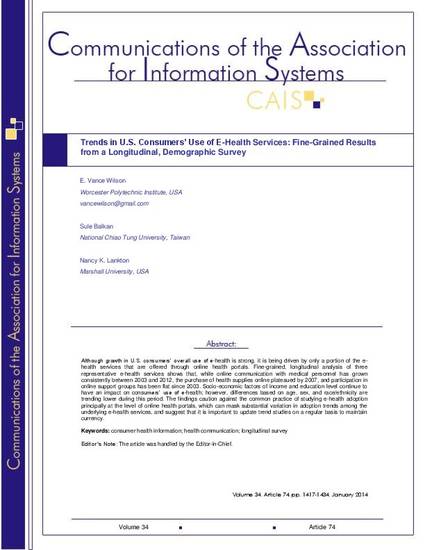
Although growth in U.S. consumers’ overall use of e-health is strong, it is being driven by only a portion of the e-health services that are offered through online health portals. Fine-grained, longitudinal analysis of three representative e-health services shows that, while online communication with medical personnel has grown consistently between 2003 and 2012, the purchase of health supplies online plateaued by 2007, and participation in online support groups has been flat since 2003. Socio-economic factors of income and education level continue to have an impact on consumers’ use of e-health; however, differences based on age, sex, and race/ethnicity are trending lower during this period. The findings caution against the common practice of studying e-health adoption principally at the level of online health portals, which can mask substantial variation in adoption trends among the underlying e-health services, and suggest that it is important to update trend studies on a regular basis to maintain currency.
Available at: http://works.bepress.com/nancy_lankton/35/
